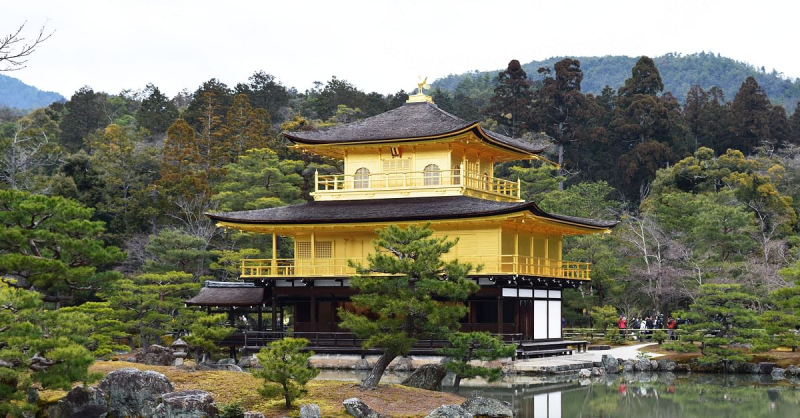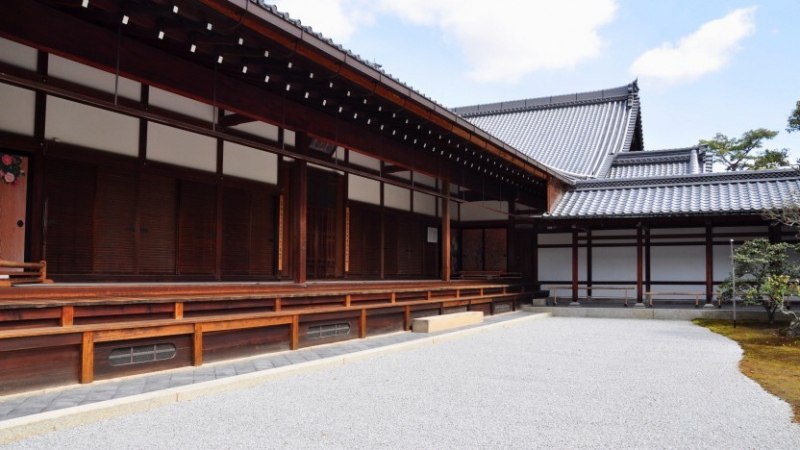Kinkaku-ji
Kinkaku-ji is a Zen Buddhist temple in Kyoto, Japan, officially known as Rokuon-ji (literally "Deer Garden Temple"). It is one of the most popular buildings in Kyoto, attracting a large number of visitors each year. It is a National Special Historic Site, a National Special Landscape, and one of 17 World Heritage Sites that comprise the Historic Monuments of Ancient Kyoto.
The temple, formally known as Rokuonji, was the retirement home of the shogun Ashikaga Yoshimitsu, and following his death in 1408, it became a Zen temple of the Rinzai sect according to his will. Kinkaku-ji inspired the similarly called Ginkakuji (Silver Pavilion), which was built on the other side of the city a few decades later by Yoshimitsu's grandson, Ashikaga Yoshimasa.
Kinkaku-ji, the lone building remaining from Yoshimitsu's former retirement compound, is an outstanding temple erected overlooking a big pond. It has burned down several times throughout its history, most notably in 1950 when it was set on fire by a fanatical monk during the Onin War, a civil war that destroyed most of Kyoto. The current structure was constructed in 1955.
Kinkakuji was created to reflect the opulent Kitayama culture that flourished in Kyoto's wealthy aristocratic circles during Yoshimitsu's reign. Each floor symbolizes a different architectural style.
The first floor is built in the Shinden style, which was popular for royal buildings during the Heian Period, and its natural wood pillars and white plaster walls contrast but enhance the pavilion's gilded upper stories. On the first floor, there are statues of Shaka Buddha (historical Buddha) and Yoshimitsu.
The second floor is built in the Bukke style, which is popular in samurai homes, and its outside is fully covered in gold leaf. Inside, there is a seated Kannon Bodhisattva surrounded by statues of the Four Heavenly Kings, although the statues are not visible to the public. Finally, the third and highest floor is designed in the form of a Chinese Zen Hall, is gilded both inside and out, and is topped with a golden phoenix.
Visitors passing by the head priest's former dwelling quarters noted for its painted sliding doors but not open to the public, after viewing Kinkakuji from across the pond. The trail then passes behind Kinkakuji and leads through the temple's gardens, which have been restored to their original design from Yoshimitsu's time. Other attractions in the gardens include Anmintaku Pond, which is supposed to never dry up, and sculptures to which visitors throw coins for good luck.
Location: 1 Kinkakuji-chō, Kita-ku, Kyōto, Kyoto Prefecture, Japan












